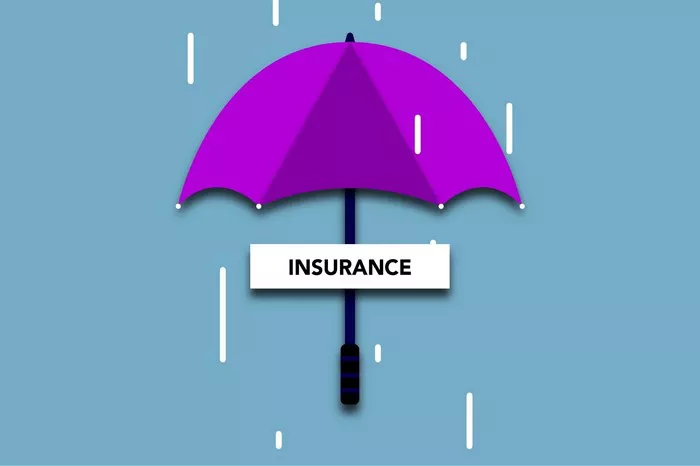In the realm of financial planning and employee benefits, voluntary life insurance is an important option that many individuals consider. It offers an additional layer of financial protection for oneself and one’s loved ones. Unlike group life insurance that is often provided by employers as a standard benefit, voluntary life insurance gives employees the choice to enroll and select the coverage amount that suits their specific needs. Understanding how voluntary life insurance works is crucial for making informed decisions about personal and family financial security.
What is Voluntary Life Insurance?
Voluntary life insurance is a type of life insurance policy that individuals can choose to purchase through their employer or an organization they are affiliated with. It is an optional benefit, meaning employees are not required to enroll but have the opportunity to do so. For example, a company might offer a basic group life insurance policy to all employees, but also make available a voluntary life insurance program that allows employees to increase their coverage beyond the basic level. This gives employees the flexibility to customize their life insurance protection based on their individual circumstances, such as the number of dependents they have, their financial obligations, and their personal risk tolerance.
Coverage Options and Amounts
1. Flexible Coverage Amounts
One of the key features of voluntary life insurance is the ability to select the coverage amount. Employees can typically choose from a range of coverage levels, often starting from a relatively low amount, like $10,000, and going up to several times their annual salary. For instance, an employee who earns $50,000 a year might be able to choose a voluntary life insurance coverage amount of $100,000, $200,000, or more. The choice of coverage amount depends on factors such as how much financial support the employee wants to leave for their family in the event of their death. If they have a mortgage, children’s education expenses, or other debts to consider, they may opt for a higher coverage amount to ensure these obligations can be met.
2. Coverage for Dependents
Many voluntary life insurance plans also offer the option to include coverage for dependents. This can include a spouse and children. For example, an employee can choose to purchase life insurance coverage for their spouse, which might be a fixed amount or a percentage of the employee’s own coverage. Similarly, coverage for children can be added, usually with a set amount per child. This is beneficial as it provides financial protection for the whole family. If the employee were to pass away, the life insurance payout could help the surviving spouse cover living expenses and ensure the children’s future needs, such as education and healthcare, are taken care of.
Premiums and Payment
1. Premium Determination
The premiums for voluntary life insurance are based on several factors. Age is a significant determinant. Generally, the younger an individual is when they enroll, the lower their premiums will be. For example, a 25-year-old employee will likely pay a lower premium for the same coverage amount compared to a 45-year-old. Health status also plays a role. Employees who are in good health and have no significant pre-existing medical conditions will usually have lower premiums. The coverage amount chosen obviously affects the premium as well. Higher coverage amounts will result in higher premiums. Additionally, smoking habits can impact premiums. Smokers typically pay more for life insurance than non-smokers because they are considered to have a higher risk of developing health problems and an earlier death.
2. Payment Methods
Premiums for voluntary life insurance are usually deducted from the employee’s paycheck on a pre-tax basis. This has the advantage of reducing the employee’s taxable income. For example, if an employee’s gross paycheck is $3,000 and they have a $50 monthly premium for voluntary life insurance deducted, their taxable income for that month would be calculated based on $2,950. Some employers may also offer the option to pay premiums on a post-tax basis, but this is less common. The payroll deduction system makes it convenient for employees to pay their premiums as it is an automatic process and they don’t have to worry about making separate payments.
Eligibility and Enrollment
1. Eligibility Requirements
To enroll in voluntary life insurance, employees usually have to meet certain eligibility criteria. They must typically be a full-time or part-time employee of the organization offering the benefit. Some employers may have a waiting period before new employees can enroll, such as 30 days or 90 days. This is to ensure that the employee is committed to the job and to manage administrative processes. Additionally, there may be limitations on enrollment during certain times of the year, often referred to as an open enrollment period. Outside of the open enrollment period, employees may only be able to enroll if they have a qualifying life event, such as getting married, having a child, or losing other life insurance coverage.
2. Enrollment Process
The enrollment process for voluntary life insurance is usually straightforward. Employees are provided with information about the available coverage options, premiums, and benefits. They then fill out an enrollment form, which includes details such as the coverage amount they want to select, whether they want to include dependent coverage, and any beneficiary designations. Beneficiary designations are crucial as they determine who will receive the life insurance payout in the event of the insured’s death. The employee can name a spouse, children, other family members, or even a trust as the beneficiary. Once the enrollment form is submitted and approved by the insurance company, the coverage becomes effective according to the terms of the policy, which may be immediate or after a short waiting period.
Policy Benefits and Payouts
1. Death Benefit
The main benefit of voluntary life insurance is the death benefit. If the insured employee passes away while the policy is in force, the insurance company will pay out a lump sum of money to the designated beneficiary. This money can be used for a variety of purposes, such as paying off debts, covering living expenses, funding children’s education, or providing financial security for the surviving family members. For example, if an employee with a $200,000 voluntary life insurance policy dies, the beneficiary will receive $200,000 tax-free (in most cases). The death benefit provides a crucial financial safety net for the family during a difficult time.
2. Accelerated Death Benefit Option
Some voluntary life insurance policies offer an accelerated death benefit option. This allows the insured to receive a portion of the death benefit while they are still alive if they are diagnosed with a terminal illness. For instance, if an employee is diagnosed with a terminal cancer and has a life expectancy of less than a year, they may be able to access a percentage of the death benefit, say 50%, to help pay for medical expenses, home care, or to make their remaining time more comfortable. This option can provide much-needed financial support during a time of serious illness.
Portability and Conversion Options
1. Portability
Many voluntary life insurance policies offer portability. This means that if an employee leaves their current employer, they can usually take the policy with them. The premiums may change, as they will no longer be part of a group plan and will be based on an individual rate. However, the ability to keep the coverage is valuable. For example, if an employee has had a policy for several years and has developed health issues since enrolling, they may not be able to get a new policy at a reasonable cost. Portability allows them to maintain their life insurance protection.
2. Conversion Option
Another important feature is the conversion option. If an employee leaves their job or the voluntary life insurance plan is discontinued, they can often convert their group voluntary life insurance policy into an individual life insurance policy. This is beneficial as it gives the employee the opportunity to continue their life insurance coverage without having to go through the underwriting process again. The new individual policy may have different terms and premiums, but it provides a seamless transition from the group policy. For example, an employee who is retiring and losing their employer-provided benefits can convert their voluntary life insurance to an individual policy and ensure that their family’s financial protection remains intact.
Policy Exclusions and Limitations
1. Exclusions
Voluntary life insurance policies typically have some exclusions. For example, death as a result of suicide within a certain period after the policy is issued, usually the first one or two years, may not be covered. The insurance company may also exclude death due to illegal activities or participation in certain high-risk activities, such as skydiving without proper safety precautions. It’s important for employees to be aware of these exclusions so they understand the circumstances under which the policy may not pay out.
2. Limitations
There may also be limitations on the policy. Some policies may have a maximum coverage amount, regardless of the employee’s salary or needs. Additionally, the policy may have a cap on the amount of coverage for dependents. For example, the maximum coverage for a spouse might be set at $100,000, and for each child at $10,000. Understanding these limitations helps employees make an appropriate choice of coverage amounts and manage their expectations regarding the policy’s benefits.
Claims Process
1. Reporting a Death
When an insured employee passes away, the beneficiary must notify the insurance company as soon as possible. This is usually done by contacting the employer or the insurance company directly. The beneficiary will need to provide proof of the insured’s death, such as a death certificate. The insurance company will then initiate the claims process.
2. Claims Investigation
The insurance company will conduct a claims investigation. They will review the policy details, including the coverage amount, beneficiary designations, and any exclusions or limitations that may apply. They may also request additional information, such as medical records if the cause of death is in question. For example, if the death was due to an accident, the insurance company may want to know more about the circumstances of the accident to ensure it is not an excluded event.
3. Payout
Once the claims investigation is complete and the claim is approved, the insurance company will make the death benefit payout to the beneficiary. The payout is usually made in a lump sum and can be transferred directly to the beneficiary’s bank account or paid by check. The process can take some time, usually a few weeks to a few months, depending on the complexity of the claim and the insurance company’s procedures.
Importance of Voluntary Life Insurance
Voluntary life insurance is an important component of personal and family financial planning. It provides an additional layer of protection beyond what may be available through standard group life insurance. It allows individuals to customize their coverage based on their specific needs and circumstances. For those with dependents, it offers peace of mind knowing that their family will be financially supported in the event of their death. It can also be a valuable asset in times of serious illness, with the accelerated death benefit option. Overall, understanding how voluntary life insurance works enables individuals to make informed decisions about their financial security and the well-being of their loved ones.
Conclusion
In conclusion, voluntary life insurance offers a flexible and valuable option for individuals to enhance their life insurance coverage. With its various coverage options, premium determination factors, enrollment procedures, policy benefits, and portability and conversion features, it can be tailored to meet different needs. However, it’s important to be aware of the exclusions, limitations, and the claims process. By carefully considering all these aspects, individuals can make the most of voluntary life insurance and ensure that they and their families have the financial protection they need in the face of life’s uncertainties.
Related topics:






























